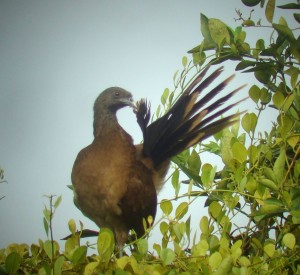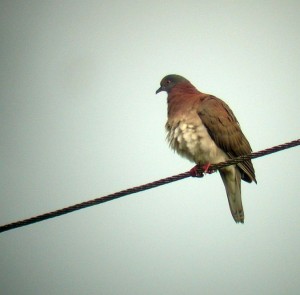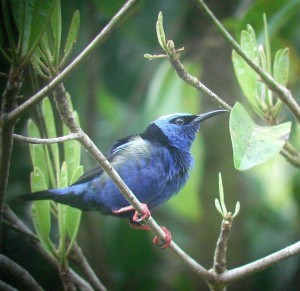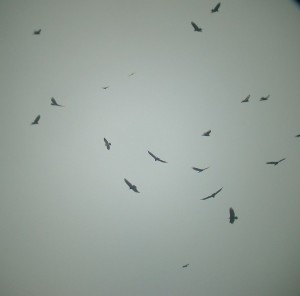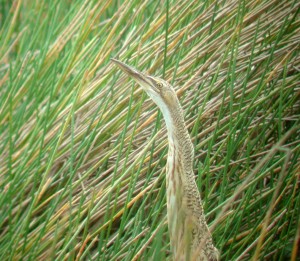Wetlands happen wherever the water flows, meets, and finds itself. Tiny drips, unobtrusive ditches, laughing streams, and expansive lakes; wetlands take various forms. When the water overflows and extends itself to form lagoons and marshes in Costa Rica and other tropical places, we have rich and dynamic habitats brimming with life. In Costa Rica, there are three principal, large, flat areas that collect rain to create tropical lagoons and a myriad of marsh habitats.
These places are (1) the Tempisque River Basin, a big floodplain that includes Palo Verde National Park, rice growing areas, and some wildlife refuges, (2) the human-made but very important wetlands south of Ciudad Neily, and (2), the wetlands in northern Costa Rica associated with Lake Nicaragua. These latter marshes are some of the most extensive wetlands in Costa Rica; slow meandering waterways and flooded areas that harbor a fantastic wealth of birds and wildlife.

This past weekend, Maryllen and I visited those northern wetlands with a group from the Birding Club of Costa Rica. These were some of the highlights and observations from those memorable days.
Medio Queso Delivers
Medio Queso is a tributary of the San Juan River that flows through and feeds a large freshwater marsh near Los Chiles. The name translates to “half cheese” but when you take a boat ride there with Chambita, you get the full cheese wheel and some!
Boat trips at this site are typically wonderful. During our afternoon on the river, we had views of several Pinnated Bitterns (arguably the best site for this local species in Costa Rica), lovely Least Bitterns, Fork-tailed Flycatchers, a Yellow-breasted Crake bringing food to hidden young, Black-collared Hawk, Snail Kites, Limpkins, and more.

Ruddy-breasted Seedeaters were fairly common, we inspected the pink tones on the big bill of a Nicaraguan Seed-Finch at close range, saw a distant Jabiru feeding in the marsh, and had our fill of Nicaraguan Grackles.
It’s hard to beat all of these birding highlights and more on a leisurely boat ride through a tropical marsh.
Cano Negro can be Really Hot in April
The following day, we did another boat ride with Chambita in Cano Negro. Low water levels limited access to some spots but we still saw a lot. The only problem was the heat. I suppose because of the time of year, and because the low water levels kept the boat floating below the breeze, we were feeling those temperatures. It was a bit of a challenge to try and stay cool enough to function, and that was without moving a muscle.
This was somewhat surprising because, on other occasions, I have worn a light jacket during boat trips at Cano Negro. In any case, we still saw good numbers of birds, especially where they were concentrated in shallow lagoons.
We had close looks at a Sungrebe, saw another Black-collared Hawk, and watched two dozen Jabirus lord over dozens of Great Egrets and other waterbirds feasting on fish trapped in the shallow, diminishing waters.


There be Good Birding in Los Chiles
Los Chiles isn’t the best place to go birding in Costa Rica but, there is some habitat, mostly down at the river. As birds move from one area to the next, you might see more than you expect. Our unexpected bird was a Dickcissel that flew in to promptly land in a bush, right in front of us. The other side of the same bush hosted an American Pygmy Kigfisher, and we saw another Sungrebe on the other side of the river!
Mind you, while watching these and other birds, there were a few people fishing, one person loudly imitating Howler Monkeys, and a few others drinking beers while seated at grungy picnic tables at 7 in the morning.
None of this activity distracted the birds, nor us from seeing them including two other specialties of Cano Negro; the Gray-headed Dove, and the Spot-breasted Wren. Flocks of Barn, Bank, and Cliff Swallows also flew from south to north, Amazon, Ringed, and Green Kingfishers rattled and entertained, a pair of Green Ibis flew over, and parrot and parakeets were always in view.
Los Chiles is Not a Destination for Gourmands (or Foodies)
There might be more birds in Los Chiles than you think but the restaurant scene is another story. The few options have the same menus typically found at most small, average restaurants in Costa Rica, and wait times can be a while. The first night, we ate at Heliconias and I enjoyed the ceviche. The waiter was also good and attentive. Best of all, he set up and turned on a large fan to make us feel like we were sitting in a breeze.
Gaspar’s had the advantage of an actual, natural breeze blowing through the open air, second story dining and drinking area. This was very good. The pleasant feelings generated by brushes of air in hot lowland weather alleviated the sonic assault made by some of the worst music ever created, at just enough volume to make you cringe. Ok, so who knows if it was the worst, after all, there is the horrendous stuff played on the ferry from Paquera to Punatarenas but I daresay the sonic bombardment was memorable, and not in the best of ways.
The food at Gaspar’s was surely better than the music selection (it had to be because if it were worse, we would have self-combusted at the first bite) but I wouldn’t say it was wonderful. Or, it might be Ok and that I’m just not super keen on extra fried food or burnt stuff. To be honest, I’m probably exaggerating there, I mean I did see some of the other plates and they didn’t look that bad. If you stay in Cano Negro, I wholeheartedly vouch for the excellent cuisine and service (and lodging) at Hotel de Campo but when staying in Los Chiles, keep the expectations on the down low.
C and C Cabins in Los Chiles Gets a Thumbs Up
Not looking for anything fancy, our group stayed at CyC Hotel in Los Chiles. I wasn’t quite sure what to expect but I left the place with a smile and a big thumbs up! It was cheap yet the rooms were fine, clean, quiet, had hot water, and air conditioning. There is also a secure parking lot, and the couple who own the place were very accommodating. We requested early coffee and they made it for us, no problem. We had breakfast there and it was also good. The guy was always smiling, accommodating, and, told us that he used to say hello to an owl (suspected potoo) that visited the place nightly for several years (sadly, it hasn’t been present for some time).
His partner was also just as accommodating, told me about the night bird that visited them and how she hopes it comes back, and was rocking some cool gold bling. If you are looking for a low-price option for a stay in Los Chiles, these are good people to support. Another friendly place we have used on other trips that I also recommend is Felicia’s Cabins. Other options also exist in Los Chiles but I haven’t stayed at them.
Night Birds at Cano Negro
Speaking of nocturnal avian visitors, the general area around Los Chiles and Cano Negro is pretty good for the birds of the night. Since we had already had Great Potoo and Pacific Screech-Owls on day roosts during a long, hot day of birding, we didn’t look too much more on the 20 kilometer plus drive from Cano Negro to Los Chiles. However, we still ended up seeing a family of young Barn Owls screeching into the dark, tropical night.

With more time, you can find Striped Owl (and other owl species), and maybe even locate the rare Ocellated Poorwill.

It’s a Long and Bumpy Drive to Cano Negro
The road to Cano Negro has always been a challenge. Lately, it seems even less fun. Expect a very bumpy road marked by an abundant diversity of holes and indentations (maybe sort of like driving on the moon?). The road texture makes for a long and uncomfortable drive but if you rent the right vehicle, well then, I suppose it’s not as much of an issue. Not to mention, you can and should watch for birds en-route in any case.
The birding club trip to the northern wetlands was fun and productive as the birding typically is in that area. If you plan on going, I hope this blog helps. If looking to stay in Cano Negro for birding, I suggest Hotel de Campo for the birdy grounds, home-made, authentic Italian pasta, and more. Get psyched for your trip by checking out my eBird trip report, and please support this blog by purchasing “How to See, Find, and Identify Birds in Costa Rica”, a complete birding site guide for Costa Rica, and tool for planning birding trips to Costa Rica. I hope to see you here, until then, I wish you some sweet May birding!
Most images in this post were taken by Heather Fabro Angell.























